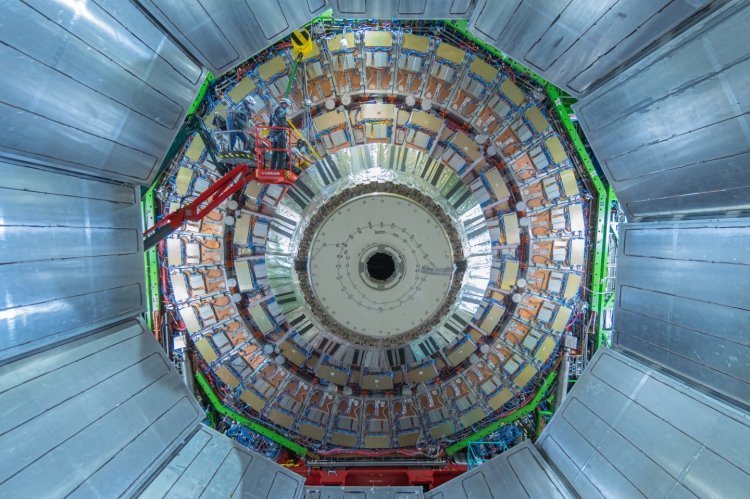
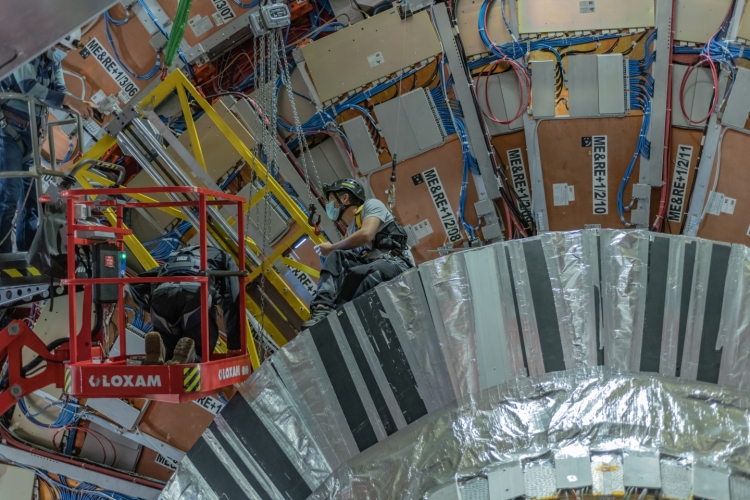
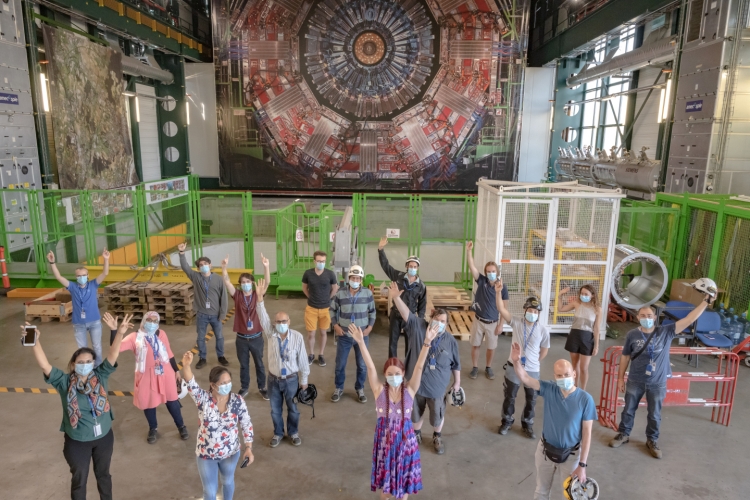
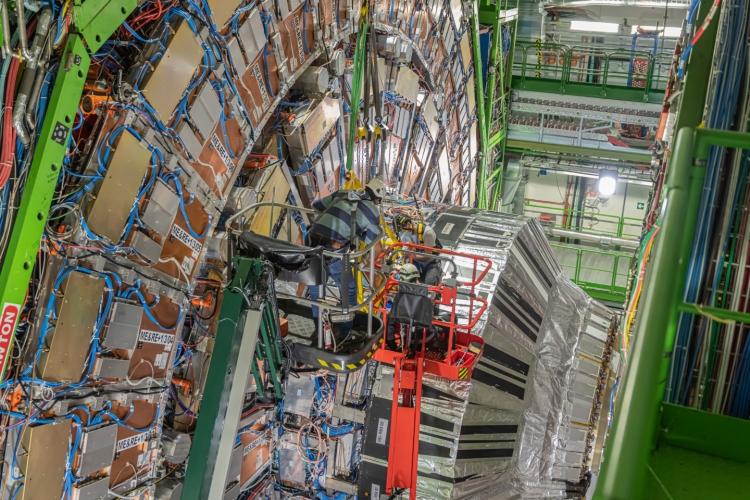
Despite the rather challenging circumstances of the COVID-19 pandemic, the CMS GEM (Gas Electron Multiplier) team has been working against all odds to complete the installation of the very first GEM station (GE1/1) in CMS. With the completion of one side of the detector (negative endcap) in October 2019, we are now happy to report the completion of the other side (positive endcap) as well. This is an important milestone for the full CMS collaboration, as it represents the first completely installed Phase II detector upgrade, and introduces a brand-new detector technology, the GEMs, to complement the Muon system.
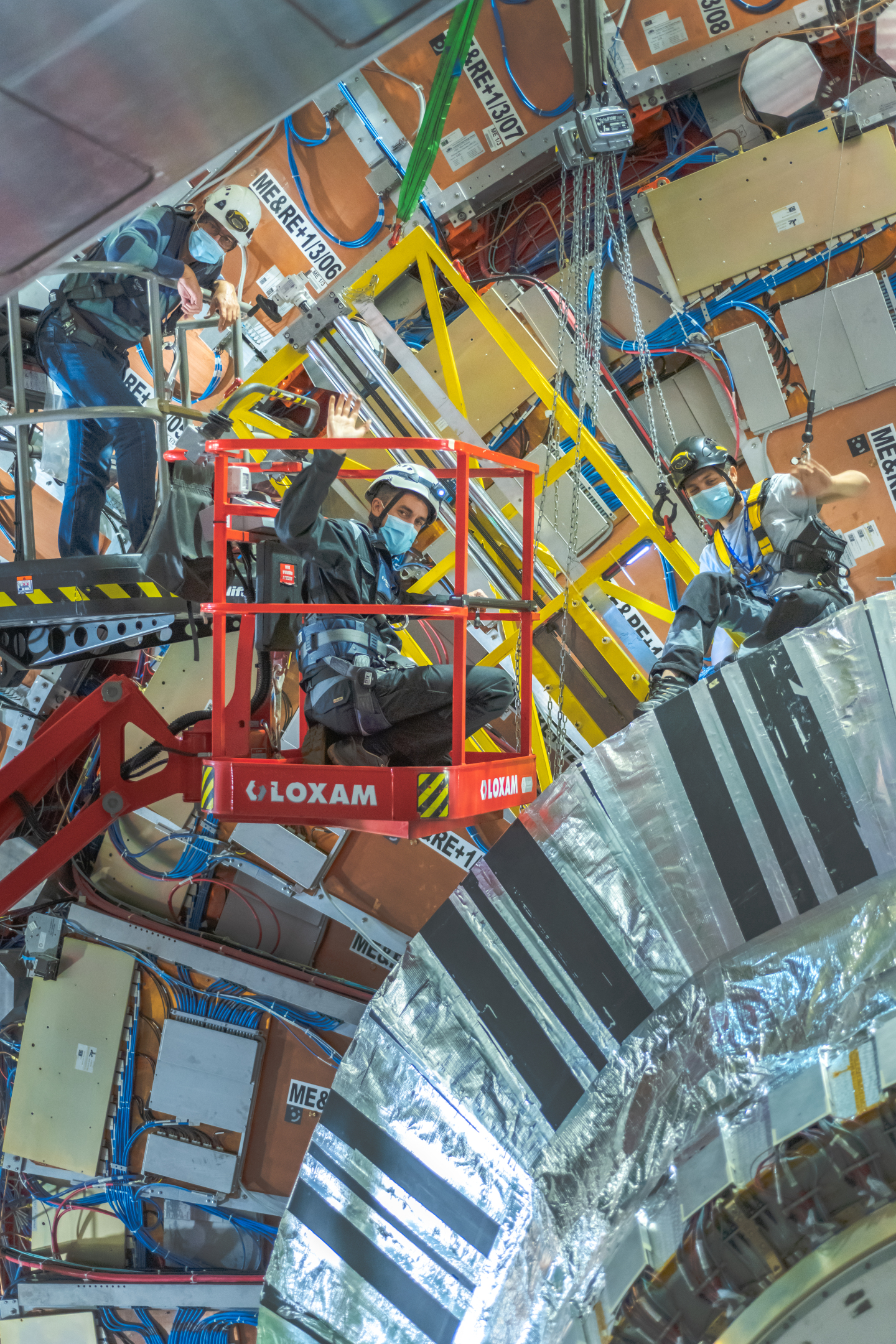 To prepare for the increased collision energy and luminosity at the LHC in Run 3 and High Lumi LHC (HL-LHC), the installation of large-area GEM detectors in the forward muon region was planned following an extensive R&D program. Since 2009, triple-GEM chambers have been developed as the optimal solution for three detector stations within the CMS endcap. GEM detectors can operate in the high-rate environments of the forward muon region, very close to the beam pipe, providing precise muon tracking. Here, muons emerge at an angle of around 10° relative to the beam axis, and the addition of GEM detectors allows us to exploit the measurement of the muon bending angle. In addition, by adding GEM detectors in front of the existing CSCs (Cathode Strip Chambers), we increase the path length within the first muon station. These new benefits allow us to greatly improve muon momentum resolution, reducing misidentified muons, while maintaining excellent trigger efficiency.
To prepare for the increased collision energy and luminosity at the LHC in Run 3 and High Lumi LHC (HL-LHC), the installation of large-area GEM detectors in the forward muon region was planned following an extensive R&D program. Since 2009, triple-GEM chambers have been developed as the optimal solution for three detector stations within the CMS endcap. GEM detectors can operate in the high-rate environments of the forward muon region, very close to the beam pipe, providing precise muon tracking. Here, muons emerge at an angle of around 10° relative to the beam axis, and the addition of GEM detectors allows us to exploit the measurement of the muon bending angle. In addition, by adding GEM detectors in front of the existing CSCs (Cathode Strip Chambers), we increase the path length within the first muon station. These new benefits allow us to greatly improve muon momentum resolution, reducing misidentified muons, while maintaining excellent trigger efficiency.
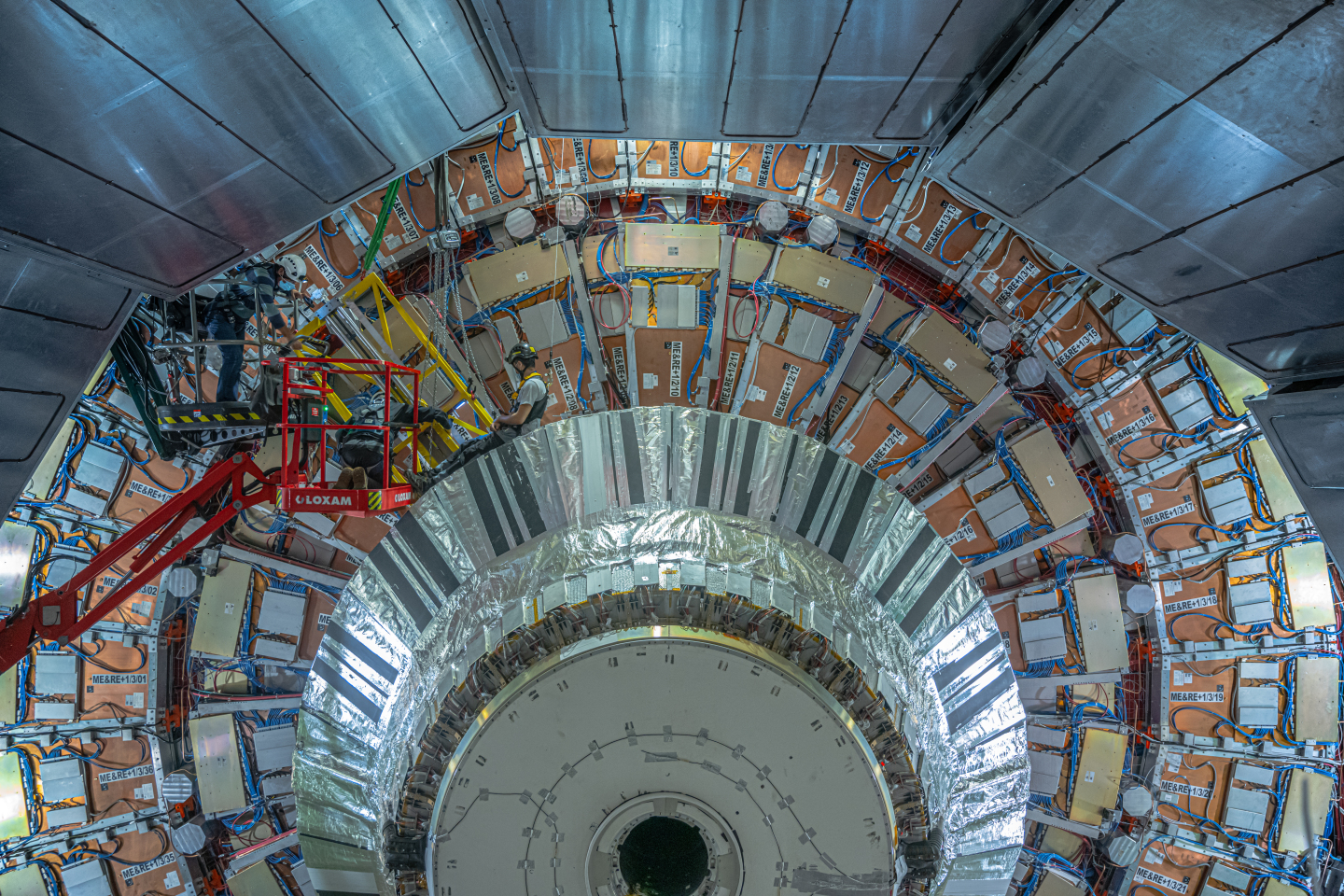 With installation complete, the next step is to fully commission the GEMs of both endcaps; for this, several steps are needed. The installed detectors will have to once again go through rigorous tests of the operating characteristics which had been previously certified at the lab prior to installation. Thus, any possible damage that might have occurred during transportation and installation can be immediately spotted and repaired as needed. The detectors’ basic parameters - namely stable voltages on the foils with an environment friendly operational gas mixture of Argon and Carbon Dioxide (Ar:CO2 70:30), low background noise, measured connectivity, and operational characteristics of the on-detector electronics - will be set to optimal settings. We will then proceed towards data taking under safe conditions with cosmic rays, first standalone and then working in tandem with all of CMS. For this to happen we have to ensure that the data acquisition (DAQ) software is fully operational and links with the CSCs are fully debugged. In short, a lot of work is in front of us, but the CMS GEM team is very much up to the task.
With installation complete, the next step is to fully commission the GEMs of both endcaps; for this, several steps are needed. The installed detectors will have to once again go through rigorous tests of the operating characteristics which had been previously certified at the lab prior to installation. Thus, any possible damage that might have occurred during transportation and installation can be immediately spotted and repaired as needed. The detectors’ basic parameters - namely stable voltages on the foils with an environment friendly operational gas mixture of Argon and Carbon Dioxide (Ar:CO2 70:30), low background noise, measured connectivity, and operational characteristics of the on-detector electronics - will be set to optimal settings. We will then proceed towards data taking under safe conditions with cosmic rays, first standalone and then working in tandem with all of CMS. For this to happen we have to ensure that the data acquisition (DAQ) software is fully operational and links with the CSCs are fully debugged. In short, a lot of work is in front of us, but the CMS GEM team is very much up to the task.

